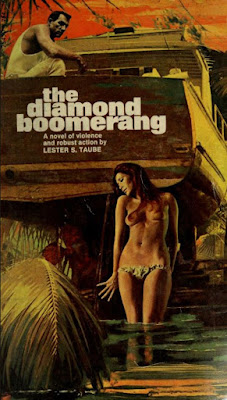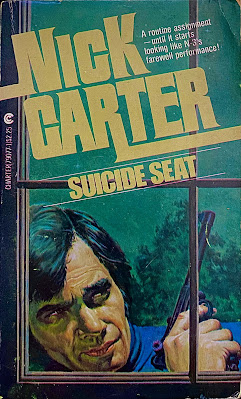William was born in Chicago in 1922 but at a young age, his family moved to Mobile, Alabama where he was raised. His father was a farmer and his mother was employed as a dress-maker. Despite dropping out of high school, William loved to read as a teenager. His favorite authors were Nathaniel Hawthorne, Ernest Hemingway, and William Faulkner.
Like a lot of the authors we cover here at PW, William joined the U.S. Army in 1943 and rose to the rank of Line Sergeant. At one point he was aboard a tanker that was being bombed. Exercising quick thinking, William opened the valves and released the explosive gas from the tanker saving the crew who were trapped aboard. For that courageous feat, William received the prestigious Soldier’s Medal and honorably left the Army in 1946. At some point after his military career he enrolled in studies at the University of Birmingham in England.
Returning to the U.S., William was employed for the Pullman Company, a manufacture of locomotive rail cars. Later, he earned a position as a police reporter with the Philadelphia Inquirer, which touched off his fascination with police work and police culture – a theme that ran through his 23 mystery novels. He worked as a police reporter for two years and then jumped ship to become a reporter and reviewer for the Philadelphia Evening Bulletin.
He sold his first short story, “John Brown's Body”, to the pulp magazine Amazing Stories in 1940, and continued to sell short stories throughout his career to magazines including the Saturday Evening Post, Collier's, and Cosmopolitan. During the pulp magazine era, his early 1940s emphasis was on science-fiction short stories for pulps like Amazing Stories and Fantastic Adventures. Wildside Press has compiled 25 of these stories into an ebook volume (HERE). William's pulp career can be identified through a variety of pseudonyms he employed – P.F. Costello, Gerald Vance, Clee Garson, and Bill Peters.
While William was working as a reporter he also wrote his first novel, But Death Runs Faster, published by Dodd Mead & Co. as a hardcover in 1948. When paperbacks took off in 1950, the novel was reprinted as The Whispering Corpse by Pocket.
In 1947, McGivern married Maureen Daly, a journalist and published author. She enjoyed success with her 1942 bestseller Seventh Summer. Margaret and William collaborated on a handful of non-genre books throughout their lives, including a non-fiction book about their world travels.
During the second half of the 1940s, it is evident that William's passion for storytelling transformed into crime-fiction and mysteries. His pulp output transitioned from galaxies far, far way to that of inner-city racketeering and the hardboiled detectives destined to stop them. He wrote over 20 crime-fiction stories for pulps like Mammoth Detective, Mammoth Mystery, F.B.I. Detective Stories, and Dime Detective. He also sprinkled in some western stories as well for Mammoth Western.
As the paperback original became the biggest publishing enterprise, William was there to cash in. Beginning in 1950, he wrote at least one novel every year through 1963. Five of those novels, Shield for Murder, The Big Heat, Rogue Cop, The Darkest Hour, and Odds Against Tomorrow, were all adapted to film. Over the course of his career, William saw 14 of his 23 novels adapted to screen.
As I alluded to earlier, we have covered a great deal of William's literary work. Here are some of our descriptions of the books we've sampled:
Rogue Cop (1954) - More than just a kick-ass tale of cops and crooks. It’s also a story of a man fighting for his own redemption - both professionally and spiritually. There’s a lot going on in this short novel, and it’s way smarter than most genre paperbacks.
Odds Against Tomorrow (1957) - Fans of heist paperbacks would rightly cite Lionel White and Donald Westlake as the high-water marks in the genre. The book doesn’t quite reach those heights, but it’s a worthwhile effort and a fun ride. Recommended.
Killer on the Turnpike (1961) - A fun way to kill some time with an old, crumbling paperback. Don’t spend a fortune on it, and you won’t be let down. Recommended.
Night Extra (1957) - It doesn’t reinvent the hardboiled formula, but the author certainly showcases his talents and strengths in perfecting it. This was a fast-paced narrative with some touching characters in which readers will invest.
In the early 1960s, William moved to Los Angeles to write for film and television. His credits include the TV series Ben Casey, Adam-12, and Kojak. While it was a cinematic disappointment, William is also credited for writing the screenplay for The Wrecking Crew, a film loosely based on the Matt Helm installment by Donald Hamilton.
William continued writing novels throughout the 1960s. His books began to take on international settings as the author and his wife became seasoned travelers. His last crime novel was Night of the Juggler, published in 1975.
After finding a robust career in California, the couple stayed there until William died from cancer in 1982 in Palm Desert.
You can get William's books HERE.























